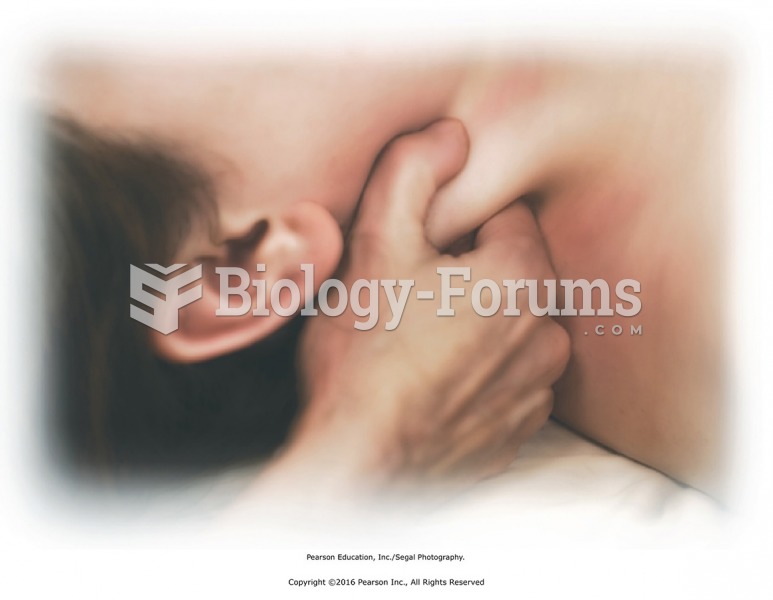|
|
|
The average adult has about 21 square feet of skin.
The longest a person has survived after a heart transplant is 24 years.
It is believed that the Incas used anesthesia. Evidence supports the theory that shamans chewed cocoa leaves and drilled holes into the heads of patients (letting evil spirits escape), spitting into the wounds they made. The mixture of cocaine, saliva, and resin numbed the site enough to allow hours of drilling.
To maintain good kidney function, you should drink at least 3 quarts of water daily. Water dilutes urine and helps prevent concentrations of salts and minerals that can lead to kidney stone formation. Chronic dehydration is a major contributor to the development of kidney stones.
People who have myopia, or nearsightedness, are not able to see objects at a distance but only up close. It occurs when the cornea is either curved too steeply, the eye is too long, or both. This condition is progressive and worsens with time. More than 100 million people in the United States are nearsighted, but only 20% of those are born with the condition. Diet, eye exercise, drug therapy, and corrective lenses can all help manage nearsightedness.
 Apply direct pressure to points on low back. Press into paraspinal muscles from the side. Move spot ...
Apply direct pressure to points on low back. Press into paraspinal muscles from the side. Move spot ...
 Apply pincer pressure to TrPs in sternocleidomastoid (SCM) muscle. Turn head to side to expose SCM; ...
Apply pincer pressure to TrPs in sternocleidomastoid (SCM) muscle. Turn head to side to expose SCM; ...





